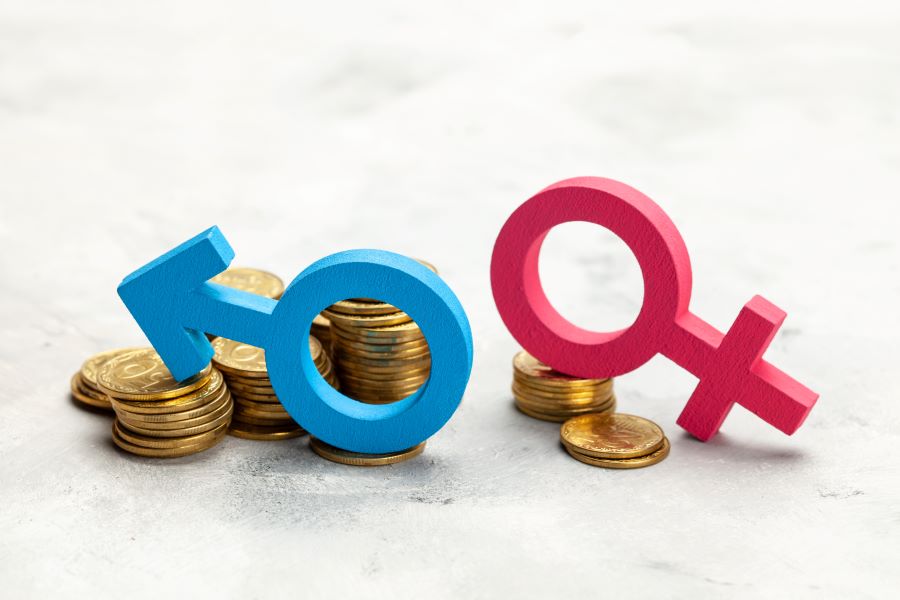Calculating your firm’s gender pay gap is a great step towards gender equity in your organisation. There are financial reasons to close the gender pay gap too; McKinsey estimates that bridging the UK gender pay gap could generate some £150 billion on top of business-as-usual GDP forecasts in 2025. In this gender pay gap guide, we explore its common causes, the impact of COVID-19, and the solutions to bridging it.
Reporting figures can nudge your organisation into realising the risks to their reputation if they fail to address the gender pay gap, but first, what is the gender pay gap?
The gender pay gap: the basics
The gender pay gap is the difference in pay between the total number of men versus the total number of women in a business.
The law requires many firms to publish gender pay gap figures each year. If you’re a public or private sector organisation with 250 employees or more, you must publish your data.
A common misconception about the gender pay gap is that it’s the same as equal pay, this isn’t true. Equal pay means people are paid the same for equal work, which is comparing one job with another. The gender pay gap, however, is about gender pay differences across an entire organisation.
The gender pay gap is measured in ‘mean’ and ‘median’ gap percentages. The ‘mean’ pay gap is calculated by adding up the wages for men and women separately and then dividing the totals by the numbers in each gender group.
The ‘median’ gap is another way to calculate the gender pay gap and this is done by lining up all men’s and women’s wages from top to bottom and comparing the number in the middle for each gender. Yet, this doesn’t consider differences in job roles, age, or previous experience that could determine the level of pay.
While some employers might be nervous to disclose gender pay gap figures, particularly if they are unfavourable, doing so will make the business appear transparent and accountable for making a change, which will likely impress women in the organisation, stakeholders, and potential recruits who are increasingly diversity, equity and inclusion minded.
Main causes of the gender pay gap
A cause of the gender pay gap is women earning less money than men in an organisation because they are in more junior roles, however, the gender pay gap in a business can also be in favour of women. In short, it’s not always women who are paid less than men.
A gender pay gap is also due to the position of women in organisations that put them at a disadvantage, such as there being fewer women in senior roles than men, and more women working part-time due to caregiving responsibilities.
Women are also more largely represented in industries that don’t pay as well as male-dominated ones. For example, women make up large groups of workers in sectors like retail and hospitality yet are underrepresented in areas since as finance and engineering.
Some think that women are paid less than men because they choose to. Namely, that they are more likely to take part-time roles or reduced hours. However, many have no choice due to other responsibilities like childcare or caring for an elderly relative or dependent adult.
Context: the gender pay gap and COVID-19
The average gender pay gap of all the firms that reported their gender pay statistics in the past financial year is 10.4%, which is the same as the average of all firms reporting in 2019/2020. The fact the gender pay gap hasn’t closed for two years is concerning, but the impact of the pandemic on women in business is a big reason for it.
For example, women were more likely to be furloughed during the height of COVID-19 as they are better represented in badly hit industries like leisure, retail, and hospitality. For those that remained in employment during this time, women were also less likely than their male counterparts to have received salary rises.
How to help close the gender pay gap
Gender bias, stereotypes, and lack of women role models also contribute to the gender pay gap, but these barriers can be removed through better workplace policies.
Aside from more transparent reporting, changes firms can make to help more women into senior roles and thus narrow the gender pay gap include more transparency around internal promotions, salaries, and bonuses.
Firms should also be careful to remove any language that could alienate women in job postings for all role levels and ensure a gender diverse cohort of applicants are invited to the interview stage and are interviewed by a gender-diverse panel to prevent gender bias from influencing the selection process.
Once you start reporting your gender pay gap figures, you can start looking at other pay gaps in your organisation, such as ethnicity and disability pay gaps, which can make your company a real advocate for diversity, equity, and inclusion.








